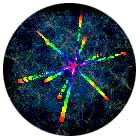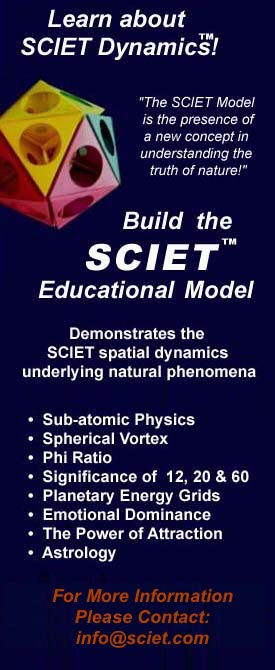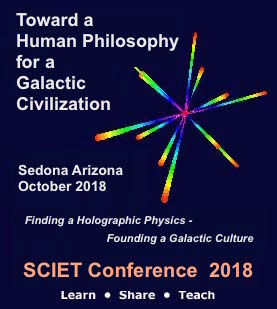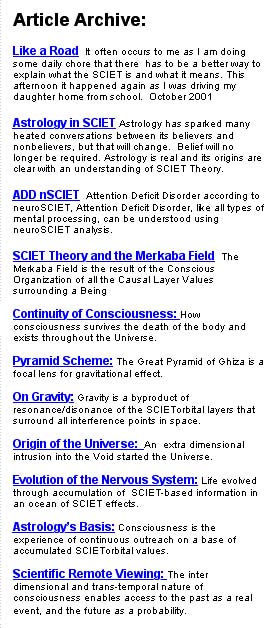Like a Road
October 2001
It often occurs to me as I am doing some daily chore that there has to be a better way to explain what the SCIET is and what it means. This afternoon it happened again as I was driving my daughter home from school.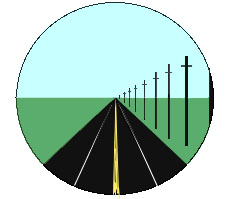
It's like a road!
Now I must stop and clarify. The SCIET that I am talking about on this web site is a force of nature, describable variously as a mathematical form, a method of understanding and the source of consciousness itself.
When I say it's like a road, I'm referring to the experience of consciousness.
Why a road? Because it has a direction and a perspective that is appropriately illustrative. Think of a long highway across the plains, a road that stretches to the horizon both in front and to the rear. Straight as an arrow with telephone poles evenly spaced one after another. You drive forward passing the poles as they grow from tiny lines aside the shimmering point that marks the road's distant future. Passing them as they retreat in the rearview mirror to become again tiny lines disappearing into a gray haze where the sky and land meet
We experience the world by moving through it, facing forward. It is this experience that is transferred into our minds as a continuous memory of daily life. So when we close our eyes and remember where we have been, what we get is a recording of what we have had in front of us, or more generally what our sensory system has experienced. 
Like traveling down a road our sensory system travels in time with each moment being steadily approached before passing into the past or behind us. Our grasp of the future is similar to the distant road ahead, it may end just beyond our vision or we may turn off, it only represents our view of where we are going.
Our sensory Perspective Bubble
If you have ever traced over a photograph of a house or room you would notice that our perspective is spherical rather than linear.
We are each at the center of our own sensory perspective bubble, a bubble determined by the range of our senses and ability to model the world around us from them. The visual bubble is enormous, the sound bubble much smaller and the bubble that is defined by reach smaller still.
When I say bubble I would mean for you to have an image of a soap bubble that floats on top of a surface. The problem with this image is that we face a single direction and so half of the bubble is excluded from our direct sensory input.
We can think of it as a bubble, but we only use half of it , the part in the front. We face forward, or perhaps I should say, our sensory system faces forward.
|
